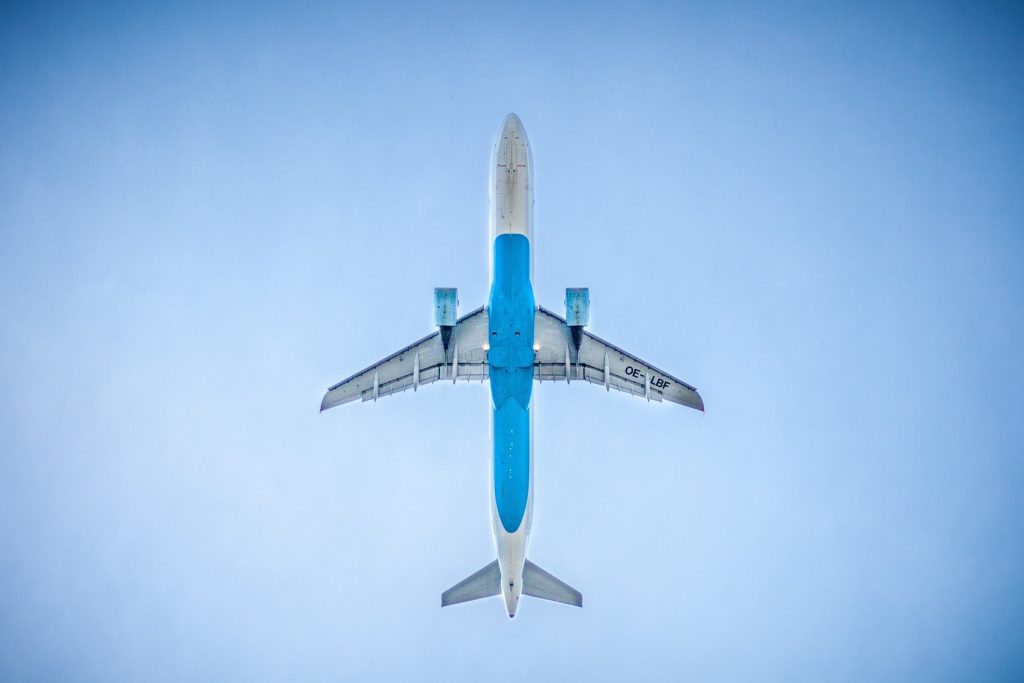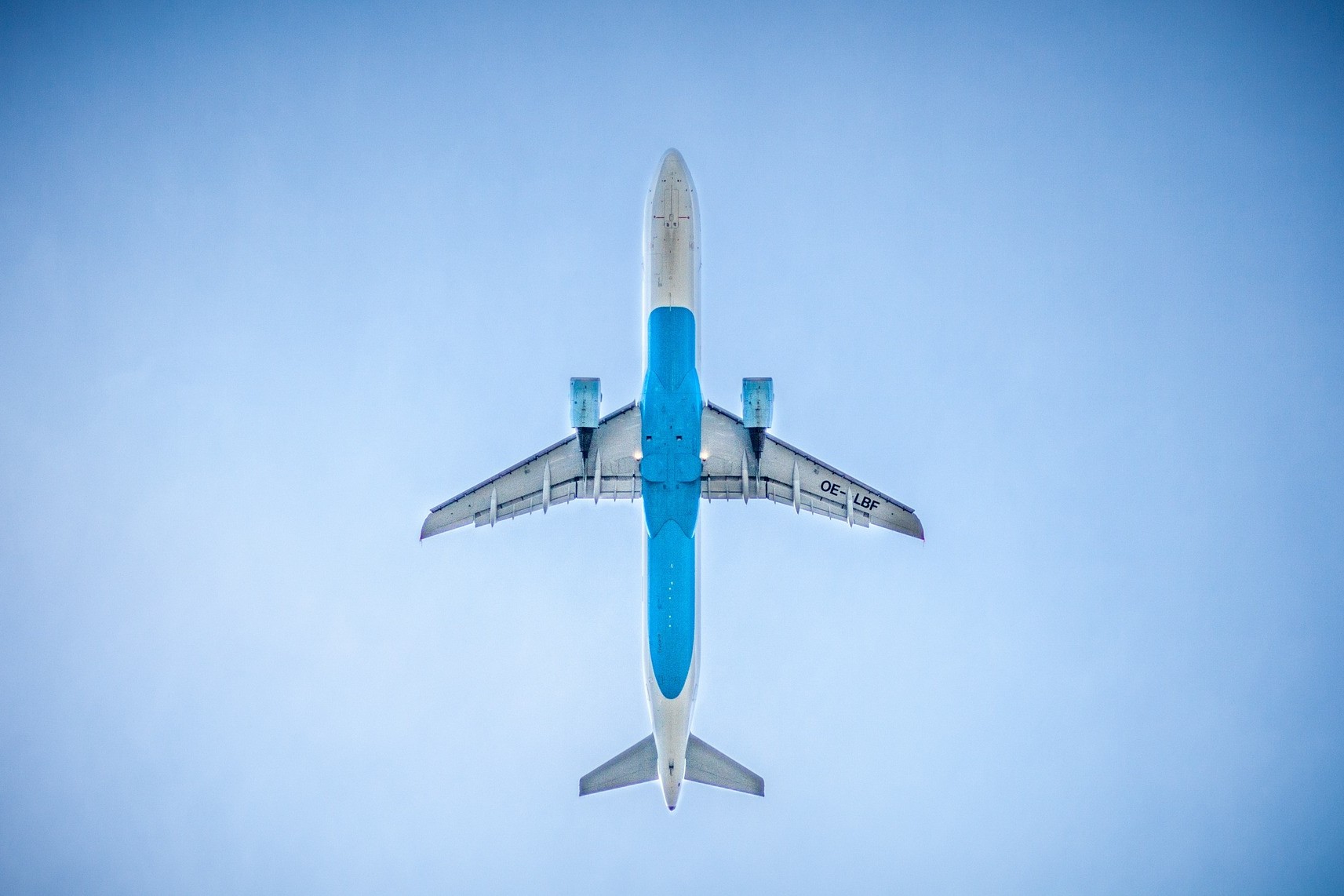Written by Hannah Segal and Edited by Kevin Liu

Almost 40 million flights take off every year, and the number continues to increase [1]. However, with the recent events of a world pandemic, questioning is beginning to arise on the health and safety of air travel. While there is much debate on how clean an airplane cabin is, the risk of spreading infectious diseases on airplanes is probably lower than many confined spaces since modern airplanes have equipped cabin air filtration systems [2].
Despite cramming large numbers of people on a plane, research has shown that the risk of transmission of infectious diseases via air particle transmission is relatively low in a cabin when passengers are not in close contact. No evidence has been shown to prove that airplane circulation systems facilitate the transmission of infectious diseases aboard an aircraft [3].
Today, the air quality in aircraft cabins is tightly controlled. Air generally circulates in defined areas in an airplane, thereby limiting the distribution of pathogens spread by small-particle aerosols. Essentially, the cabin air environment does not facilitate the spread of most infectious diseases across distances throughout the aircraft [2]. Additionally, most commercial airlines have implemented new filtration systems: the HEPA filter. A HEPA filter (High-Efficiency Particulate Air) is a type of pleated mechanical air filter that has been tested to remove at least 99.97% of pollen, dust, mold, bacteria, and any airborne particles the size of 0.3 microns or larger [4].
HEPA filters can also be found in air purifiers, vacuum cleaners, and HVACs (Heating, Ventilation, and Air Conditioning). They were initially used in the 1940s to protect workers working in nuclear facilities from breathing radiated airborne particles before making their way into hospital and household use [5]. These highly efficient fiber systems run air through to filter out large amounts of contaminants. The American Society of Heating, Refrigerating, and Air Conditioning Engineers, (ASHRAE), confirmed this with their internationally recognized test method: MERV’s—Minimum Efficiency Reporting Values [6]. A MERV reports a filter’s ability to capture particles between the size of 0.3 to 10 microns, to test how effective the air filter is [7]. Though such filters are not required on aircrafts, most flying commercial planes will have a HEPA filter or better filtration systems that are regularly inspected and changed [8]. Since HEPA filters trap most air particulates, they tend to become clogged more quickly than traditional filters, hence, these filters are replaced more frequently than what the manufacturers require in order to lower the probability of disease transmission. They are typically replaced every seven years even though they are only required to be replaced every ten years [9].
With the installation of HEPA filters in airplane filtration systems, the risk of getting sick from the air inside the cabin is very low. Not washing hands regularly and failure to maintain an appropriate distance from people who may be sick are greater contributing factors in the transmission of infectious diseases in an aircraft than contact with airborne particles disseminated by filtration systems [10].
References:
- Mazareanu, E. “Airline Industry Worldwide – Number of Flights 2019.” Statista, 10 Mar. 2020, www.statista.com/statistics/564769/airline-industry-number-of-flights/. Accessed April 28, 2020.
- Edelson, Paul, et al. “Air Travel – Chapter 8 – 2020 Yellow Book.” Centers for Disease Control and Prevention, U.S. Department of Health and Human Services, 24 June 2019, wwwnc.cdc.gov/travel/yellowbook/2020/travel-by-air-land-sea/air-travel. Accessed April 28, 2020.
- Tuberculosis and Air Travel: Guidelines for Prevention and Control. 3rd edition, World Health Organization, 2008. National Center for Biotechnology Information, www.ncbi.nlm.nih.gov/books/NBK143720/. Accessed April 28, 2020.
- Institute of Medicine (US) Committee on the Assessment of Asthma and Indoor Air. Clearing the Air: Asthma and Indoor Air Exposures. National Academies Press, 2000. National Center for Biotechnology Information, https://www.ncbi.nlm.nih.gov/books/NBK224478/. Accessed May 5, 2020.
- Taylor, Glenda. “6 Things Homeowners Should Know About HEPA Filters.” Bob Vila, Action Media Inc., 25 Mar. 2019, www.bobvila.com/articles/hepa-filters/. Accessed April 28, 2020.
- “Understanding MERV: NAFA User’s Guide to ANSI/ASHRAE 52.2.” National Air Filtration Association, National Air Filtration System (NAFA), Oct. 2018, www.nafahq.org/understanding-merv-nafa-users-guide-to-ansi-ashrae-52-2/. Accessed April 28, 2020.
- Tuberculosis Laboratory Biosafety Manual. World Health Organization, 2012. National Center for Biotechnology Information, https://www.ncbi.nlm.nih.gov/books/NBK179127/.
- “Briefing Paper: Cabin Air Quality – Risk of Communicable Diseases Transmission”. IATA, 2018. www.iata.org/contentassets/f1163430bba94512a583eb6d6b24aa56/cabin-air-quality.pdf. Accessed April 28, 2020.
- “Air Quality.” Association of Flight Attendants-CWA, Nov. 2018, www.afacwa.org/aircraft_air_quality. Accessed April 29, 2020.
- Khabir, S. “Tank Operations Contractor High-Efficiency Particulate Air (HEPA) Filter Management Plan.” U.S Department of Labor, 2015. https://www.dol.gov/owcp/energy/regs/compliance/advboard/Don_Slaugh_email_attachment_hepa_filter_management.pdf. Accessed April 28, 2020.
